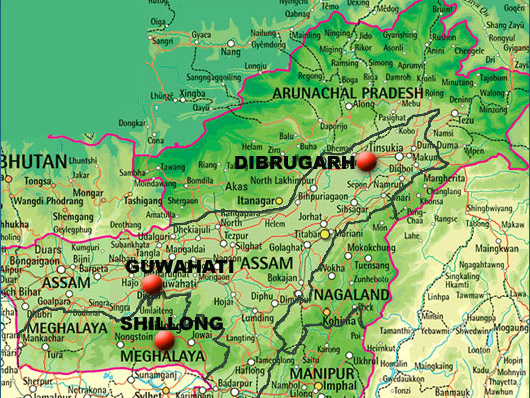Nagaland
Nagaland state borders the state of Arunachal Pradesh and part of Assam to the north and west, Myanmar to the east and Manipur to the south. Nagaland is largely a mountainous state. The Naga Hills rise from the Brahmaputra valley to as high as the Mount Saramati (3,840m) which merge with the Patkai Range in Myanmar. The state capital is Kohima, and the largest city is Dimapur. Nagaland can be best described as a tribal area, set in dense jungle with 16 major tribes and many sub groups that remain autonomous even though they share a cultural heritage. Among these tribes, the Angamis, Aos, Lothas and Sumis are the better known of the estimated 2 million populations. Each of these tribes speak different dialects belonging to the Sino-Tibetan family of languages. Nagamese, a variant language form of Assamese and local dialects is the most widely spoken local language. English, the official state language and the medium of education, is spoken widely in addition to Hindi. Weaving is a traditional art handed down through generations in Nagaland. Most of the tribes can be distinguished by their own unique designs, colors of costumes, jewelry and beads that they wear.
While little research has been done, the people here are renowned for their beautiful textiles and aggressive headhunting, still an active practice until about 80 years ago. About two thirds of the populations are Christians (mainly Baptist) and one tenth still practice animism.
Tourism has really to catch on, but those interested in the lives of traditional hill tribes would do well to make a visit here without delay. This vast jungle world dotted with ancient tribal villages is home of remarkably warm-hearted people with bizarre rituals and colorful festivals. Naga Villages are built on hill tops, houses were typically wood framed. Upon entrance to a Naga village, one passes an ornate tribal gate and then comes upon a central house with Methune (local buffalo) skulls over the doorway.


 +1 612 869 4949
+1 612 869 4949
